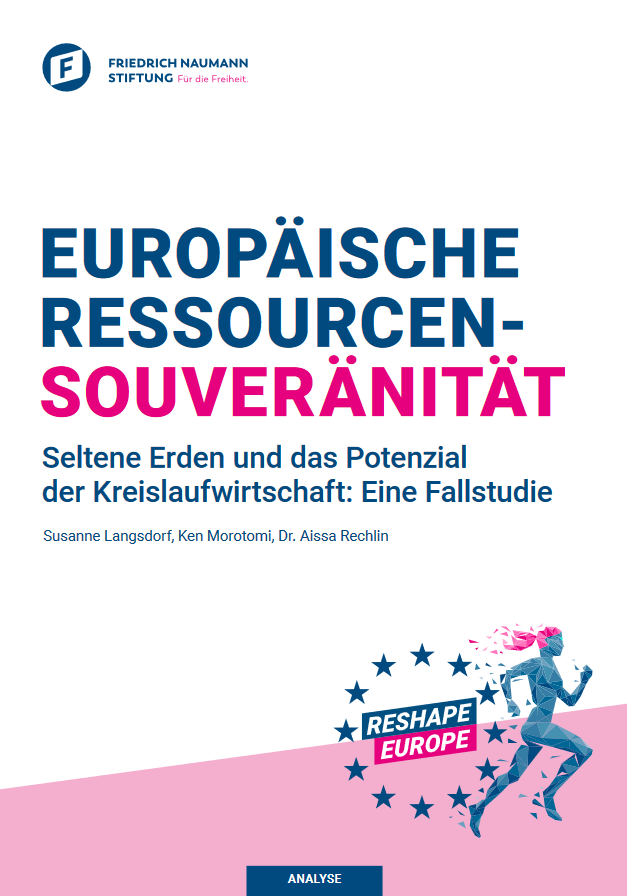Europäische Ressourcensouveränität
Seltene Erden und das Potenzial der Kreislaufwirtschaft: Eine Fallstudie
- Publication
- Citation
Langsdorf, Susanne et al. 2022: Europäische Ressourcensouveränität. Seltene Erden und das Potenzial der Kreislaufwirtschaft: Eine Fallstudie. Potsdam: Friedrich Naumann Foundation for Freedom.
Global demand for raw materials is rising continuously. Increases in overall consumption levels, as well as technological advances in specific areas such as IT, green technologies and power generation, continue to fuel international competition for rare commodities. Although there are very many applications, supply is relatively scarce and concentrated in the hands of a few players. Chinese companies in particular have achieved overwhelming market power, allowing them to dominate the supply side as virtual monopolists.
Given current experiences in energy markets – exacerbated by Russia's non-compliance with its treaty obligations – Western democracies, and the EU in particular, are exploring new supply chains and strategies to reduce their commodity dependence on China. The findings presented here by the authors of this study provide an overview of the main options the EU currently has to counter the pressures of growing dependencies.
The options include:
- Diversification of trading partners and more domestic depletion;
- Investment of reserves and consumption adjustment;
- Technological progress with the goals of substitution, and efficiency improvements in the use of raw materials;
- Restructuring of value chains, from a linear to a circular economy.
This study discusses some positive examples of feasible circular approaches that aim to achieve savings in the use of rare earths.



